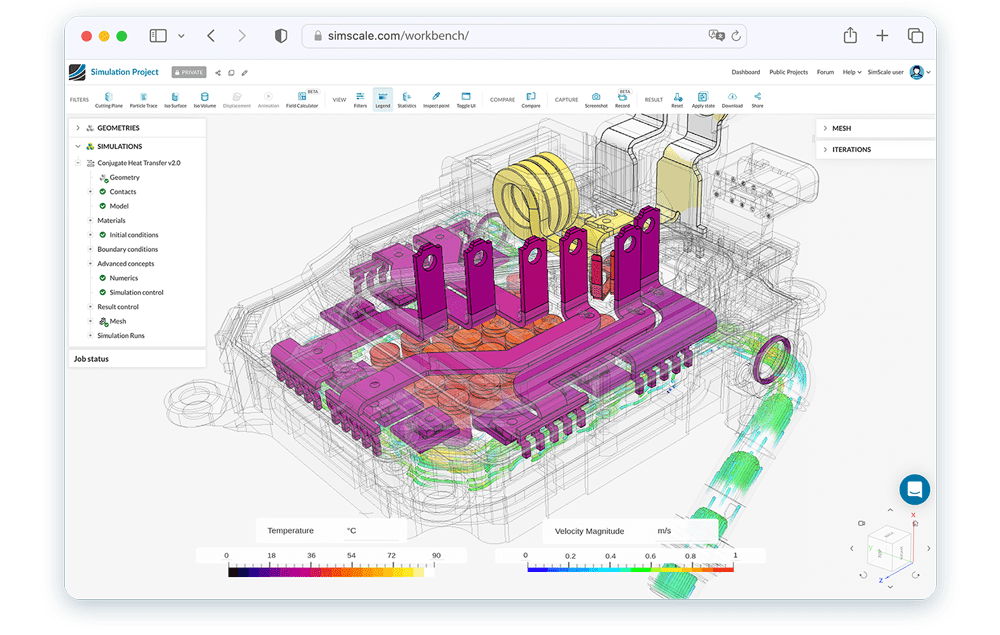
Thermal management and efficiency considerations are a central design step for many products ranging from power electronics enclosures to heat exchangers.
Use SimScale’s broad thermal simulation capabilities to analyze and optimize your product early in the design phase.
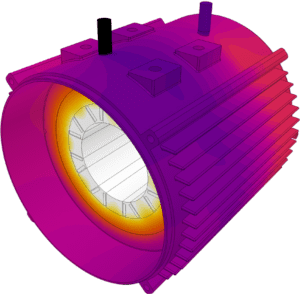

SimScale supports all major CAD tools natively and with geometry update for design variations.

Choose Cartesian mesh-based solving for early design modeling or high-accuracy body-fitted discretization for detailed parametric studies.

Analyze results, iterate designs, and retain simulation settings with SimScale’s integrated post-processor.
SimScale’s heat transfer simulation allows you to simulate coupled heat transfer in solids via conduction and in fluids through convection, in addition to radiation and thermomechanical simulation.
The thermal analysis software parameters are determined by the type of fluid convection, such as natural, mixed, or forced convection. Some of the areas in which it can be used are heat sink design, electronics cooling, heat exchangers, automotive thermal management, nuclear reactors, and more.
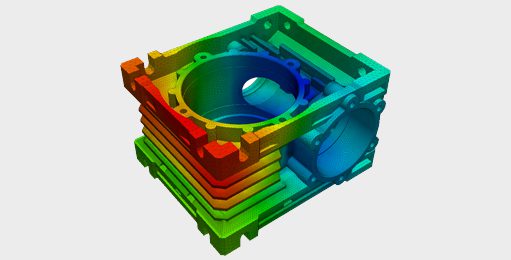
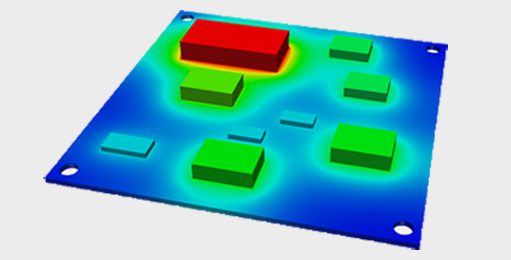
Conduction refers to heat transfer between substances in direct contact with each other. In theory, heat energy passes from the hot to the cold end of the substance and is directly related to the conductivity of the material.
SimScale’s thermal simulation software offers a module for various types of applications where heat and energy are significant study parameters. You can simulate conduction across different materials and model temperature-dependent conductivity. This includes:
Convection (also known as convective heat transfer) refers to the transfer of heat between two areas through the movement of fluids. Common in liquids and gases, it occurs when fluid molecules absorb heat and change density, leading to convection currents.
In SimScale, you can simulate convective heat transfer across various physics. These include:
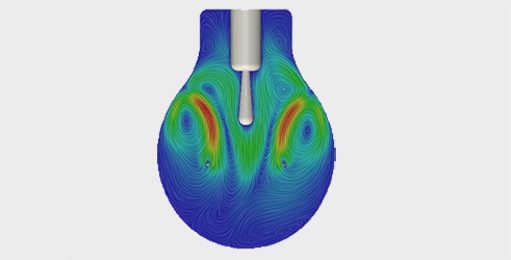
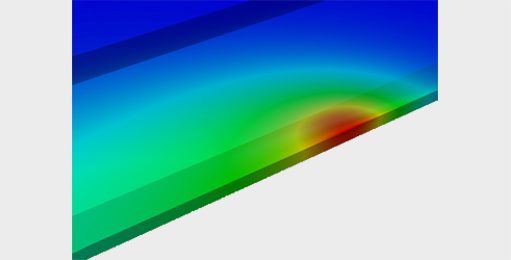
Radiation, or radiative heat transfer, is the transfer of heat via electromagnetic waves. In product design, radiation usually starts to play a role in high-temperature-difference scenarios and weakly cooled applications like natural-convection-cooled products.
A well-heated part releases its energy to the ambient environment in the form of a radiative heat transfer. The emissivity value depends on the material and surface type, e.g., surface finish like anodized aluminum heat sinks. Radiation can, therefore, be used to analyze heat loss in high-temperature components. SimScale’s thermal analysis supports:
SimScale’s thermal simulation software enables you to perform both thermomechanical and heat transfer analyses. The thermal analysis software takes into account the energy balance of the system. When investigating thermomechanical components, the effects of loads on solids caused by thermal expansion can also be included.
For many industrial applications, simulating the stress response to thermal loads and understanding failure is essential. Applications include polymeric materials, valves, pipes, basket strainers, PCB, pressure vessels and more.
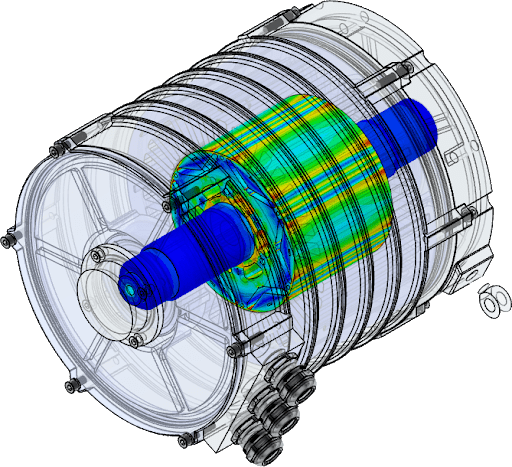

Save time and cost via early-stage, simulation-informed design decisions.
Iterate fast for optimal design and limit prototyping costs.
Avoid compromises between being first on the market and design quality.

“I have used a lot of simulation packages over the past 25 years, including Nastran, Ansys, SolidWorks, and a whole host of others. I have been using SimScale for about nine months now and it has become my goto simulation tool. It allows me to run models larger than I have ever conceived on my own workstation.”
Christopher Quijano Mechanical Engineer at MSA, United States
Sign up for SimScale
and start simulating now